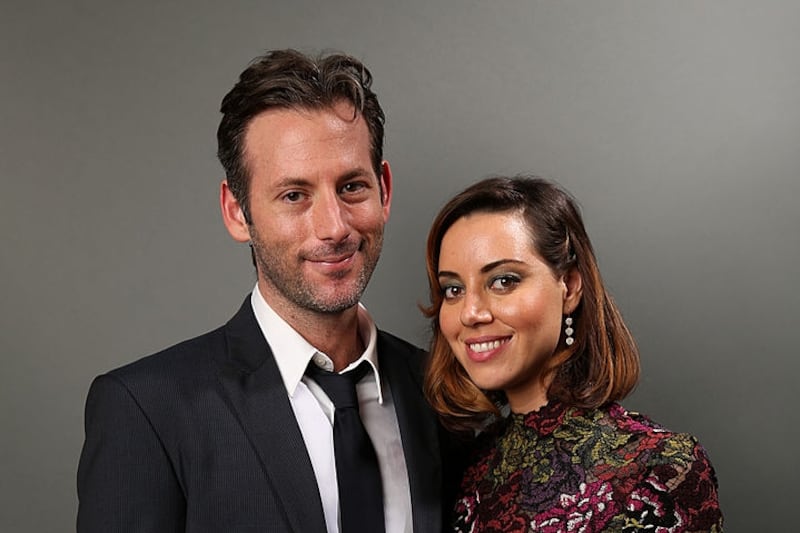There aren’t many people watching rugby in Hiroshima. It’s a gorgeous Wednesday afternoon in the city and most visitors, day-tripping from the more fashionable cities of Kyoto or Osaka, bolt for the iconic Torii Gate or devote a few hours to the city’s harrowing and unforgettable Peace Museum.
Uruguay and Fiji are playing the only rugby game of the day, 1,400 kilometres away in Kamaishi, the coastal town razed by the 2011 tsunami. But the game is invisible on the televisions here in Hiroshima. Six hundred thousand rugby fans will drift through the Japanese interior over the next few weeks, in pursuit of the World Cup action.
Sometimes it can be elusive. It’s nobody’s fault. Rugby is not the global monster that the Olympic Games or the Fifa World Cup is, which plasters its logos everywhere and presumes to own their host cities.
Japan has a rugby playing population of 125,000, but in a country of 126 million that still makes it a cult sport. Still, there are plenty of international rugby jerseys in Hiroshima – if they could just find the game.
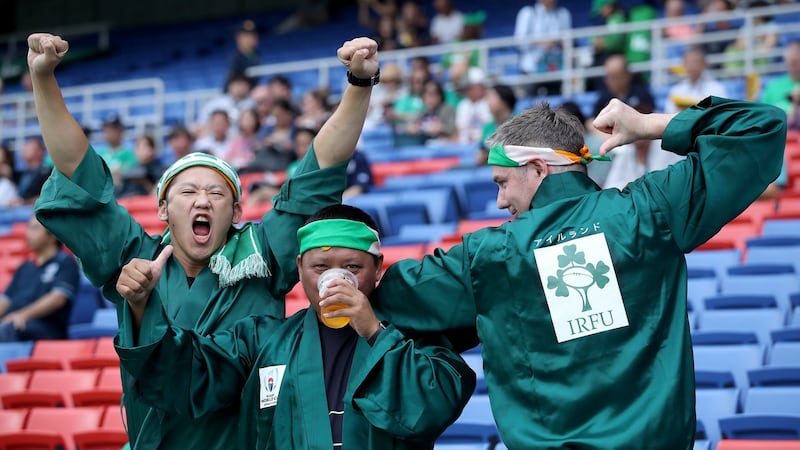
This is a sparkling city now. The abiding international image – that terrible mushroom cloud which filled the sky at 8.15am of August 6th in 1945 after bombardment pilot Paul Tibbets flew over the heart of the city and dropped the first atomic bomb used in warfare – became so enduring that it's a shock now to see the blue skies, the gleaming buildings, the Starbucks.
The city got unlucky; it was only selected as a definitive target four days before. There's an overwhelming sense that decades after the appalling destruction and burns, the radiation sickness, after the multi-generational fallout for thousands of families; after the reconstruction of the city and contentious decision as to whether the A-bombed building should be preserved or razed, what the Enola Gay left behind in Hiroshima was an irrevocable belief in pacifism.
There is a dreamy serenity and silence about the city day and night: if Hiroshima was to be represented as a public figure, it would be John Lennon circa 1978.
Robert Chilman is one of the visitors passing through Hiroshima for the day. He flew in from Brisbane with friends and they made their way up to Sapporo to watch Australia play Fiji. Since then they've been inter-railing on the Shinkhansen or bullet trains.
“It’s been freaking awesome,” he says of his experience in Japan. “The people are wonderful. I’ve never seen a stadium with such clean toilets. The only cock-up was the food and catering . . . it was pathetic. They ran out, basically. But we met up with this really nice Japanese fellow in Tokyo. One of the guys with us dropped out so we said: ‘If you can get yourself to Sapporo you can use our ticket'. And it was really cool because he was like a tour guide around the place.”
Properly tipsy
Chilman’s been taken aback by the openness of people in Japan. The politeness he expected but a sense of fun lurks surprising close to the surface.
“It is. And the drinking! Wow! We have been in these shitty little bars and befriended Japanese people and the next thing we are all pork-chops.”
It’s true. The Japanese like a tipple. In any city on any evening, you’ll see groups of mostly male post-office gatherings, white shirtsleeves rolled and briefcases swung a little skittishly as they leave in high spirits, spilling out of izakayas or making their way shakily down mall escalators, a bit giddy and giggly.
Friday nights in any Japanese city seem to be a meltdown; the straight-from-the-office gangs often absolutely blitzed; sometimes doubled over on the footpath and always wobbly under their feet.
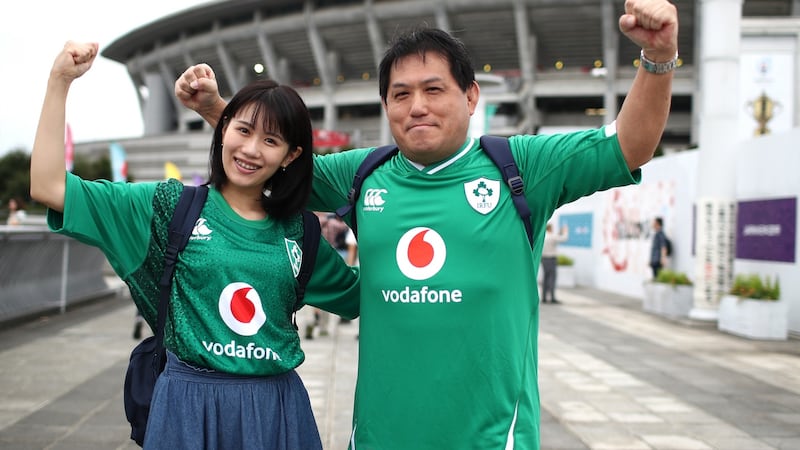
On any street it's as if 100,000 Japanese businessmen are out celebrating their Junior Cert results – but very politely. During the week, they're not late birds. Japan's two lost economic decades burned a deep imprint and work is taken seriously. But in the evening they like to get properly tipsy and the few drinks seem to permit a loosening up of all that formality and politesse.
“Where you come?” yells one local man in Kobe and his eyes widening in delight at the reply. “Aye-land.”
He takes a breath in order to get his tongue around the tricky pronunciation. “Rug! Be!” he says. “Aye…land. Very. STRONG,” he says, doing the gun-flex. “Ja-Pann. NOT strong.”
He roars with laughter at this precise summary. It’s all he has to say in English and it’s more than I can return in Japanese. He offers a big delighted hug, a bow, a wave, another bow and then trips blearily away into the evening.
‘Very few people know what actually happened here'
The only physical evidence of the devastation is the Atomic Bomb Dome, the shelled out relic of the civic building which, miraculously, stands despite its location just a few hundred metres from the hypocentre of the explosion. It’s reminiscent of Liverpool’s bombed-out church. Every fallen brick is off-limits now.
Near the railings, Kosei Mito is giving a talk to a few visitors. He is an ‘in-utero survivor’ of the A-bomb: his mother had been carrying him for four months when it exploded.
Like everyone else, she had no idea that she was being exposed to radioactive materials when she searched in the rubble of the city a few days later. Mito’s grandfather died of appalling illnesses less than a month after the bomb. His father never spoke about his experiences. His mother recently turned 101 and Mito looks exceptionally young.
What happened has shaped his world view and he has been volunteering here since retiring from his career as an English teacher a decade ago. He speaks in that perfect but highly clipped English with which Hollywood likes to portray the Japanese, as if they couldn’t be bothered with conjunctions and definite articles. As he sees it, there’s a constant internal tug of war between memorialising the trauma suffered by the city and wilfully forgetting.
“Very few people know what actually happened here. Even the Japanese people have no idea. So lately one Japanese girl asked me: I have a question. ‘Which country dropped the atom bomb?’ ” He smiles in disbelief at this.
“Why? Because all over Japan modern history is not taught. They want to hide want happened during wartime. Most of the soldiers died in vain. Even now Japanese government have no fixed view of that war. Most Japanese come here for sightseeing. Take the picture. And spend a very short time in the museum. In the elemental school, they learn a little. Just a little. But they are not taught. Why? US used the atom bomb on us. All the Americans now I meet are very modest. And eager to know what actually happened. Only this year I guided two southern American high school classes and they really want to know.”
As he speaks, visitors wander around, taking selfies, some stopping to listen, others seeking to escape the sun.
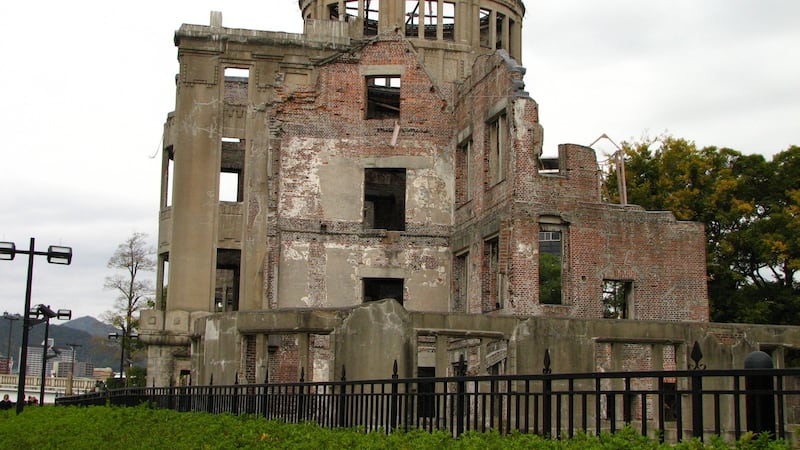
‘Constant level of respect'
Kobe is just an hour away by train. One of the big tourist attractions there is the Earthquake Memorial Museum, dedicated to the 1995 disaster which afflicted the city. Tickets include a seven-minute simulated multi-media experience of what that day was like.
Tokyo is approaching the centenary of the 1923 earthquake which levelled the city. Japan has around 1,500 quakes a year of various magnitudes. The reason that Uruguay-Fiji are playing in Kamaishi, a small town of around 30,000, is to acknowledge the town's recovery from the 2011 tsunami. You have to wonder how living in a country so prone to disaster, natural and man-made, impacts on superstition, and optimism, and outlook on life.
"It's the constant level of respect," Ed Williams says, putting his finger on what it 'is' about Japan. "Across the board. To everyone. At all times. It's magic."
"The language barrier has been more of a challenge than we anticipated," Martin Hunt says. "And I quite like that. You know, you shouldn't be able to go everywhere and just expect people to speak English. But probably the biggest challenge is actually following the rugby."
There are four of them travelling across the country for the tournament. Fiji-Uruguay is playing on silent in a sleepy café called, for reasons unclear, New York New York. The staff happily agreed to change over from the surfing, which had been showing. Clare Marshall is from Belfast. The others could loosely be described as Londoners.
“We don’t like each other much,” Hunt clarifies, pointing to Williams.
"And we're married," Richard Stephen says of Marshall.
The four are college friends close enough to slaughter one another about the usefulness of their qualifications. And they happily concede that they’ve been charmed silly by Japan.
“I had heard it was friendly, helpful and super-efficient and worked very well, Marshall says. “That has absolutely been borne out to be true.”
“And I think it kind of marries nicely with the atmosphere between rugby supporters, which is very respectful,” Hunt says.
Hunt and Williams are trying to see every game on television as well as going to England games. Sometimes it’s a hunt. They wander into local cafes and bars and are met with troubled looks by the staff. Rug-be they repeat more slowly. Rugby. Sometimes Williams will mime a scrumhalf whipping the ball from the base of the scrum, which seldom helps matters. But it always works out.
“I think there is a fear sometimes amongst the Japanese that because you don’t speak the language they won’t be able to show the hospitality that they want to,” Williams says.
“But if you show yourself to be not that fussed by that – yesterday we walked into a place that looked like a good place for dinner. No English. No English menu! No menu with pictures! We sat down anyway. Looked at the numbers. We made its-up-to-you-gestures. We are easy! We will have anything. And after that they were delighted to share and bring us what they recommended. It’s things like that make it.”
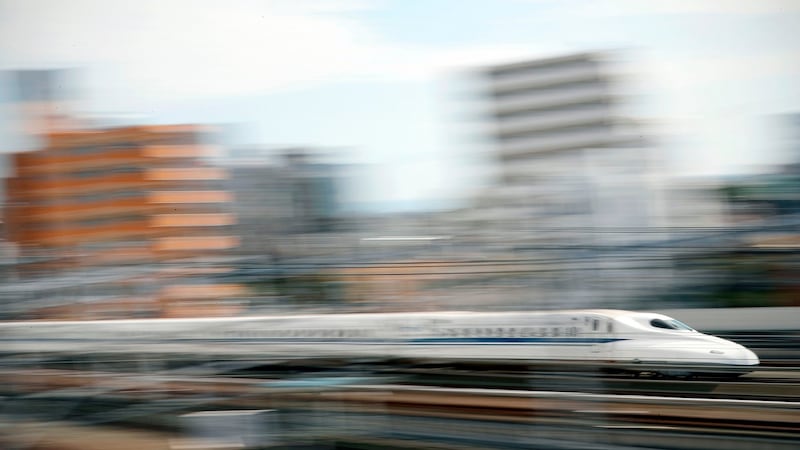
They talk about the scale of Tokyo. Even for Londoners, it is difficult to absorb the endlessness of the place.
“We were reading something there where Shinjuku Station has three million people going through each day,” Richard Stephen says. “London’s biggest station is Waterloo. And that has a quarter of a million. It’s hard to get your head around.”
The four will split for different cities and games over the coming days. Marshall looked into tickets for Ireland and Japan in Shizuoka but the tickets had already gone. She shrugs. “I am going to suffer England games, I’m afraid.”
Empty bar
The Grand Hotel in Hamamatsu is an imposing pile of brick and marble overlooking the city. It has open glass escalators, a lobby big enough to host an 11-a-side game and corridors with lush, heavy carpeting and an even heavier vibe. It's the sort of place you'd expect to see a youthful Robert Wagner wafting through, wearing something velvet and smoking a Cuban.
There are 316 rooms on this Thursday night, and precisely one guest. Upon checking in, I’m struck by the terrifying notion that I’ve managed to book The Entire Place and will be charged about 10 million yen, not including breakfast. The front desk is manned by two staff, who bow and smile pleasantly and then share grave and alarmed glances at the mention of a restaurant. All have closed, whether hours or years ago is impossible to say.
The concierge points up above and gestures the symbol two. The second floor is a huge warren of a place, with two mirror-fronted ballrooms and about a mile of corridors. Nobody’s home but eventually, as promised, there exists a small and entirely empty bar where a bar man and waiter are in full tux and stand waiting.
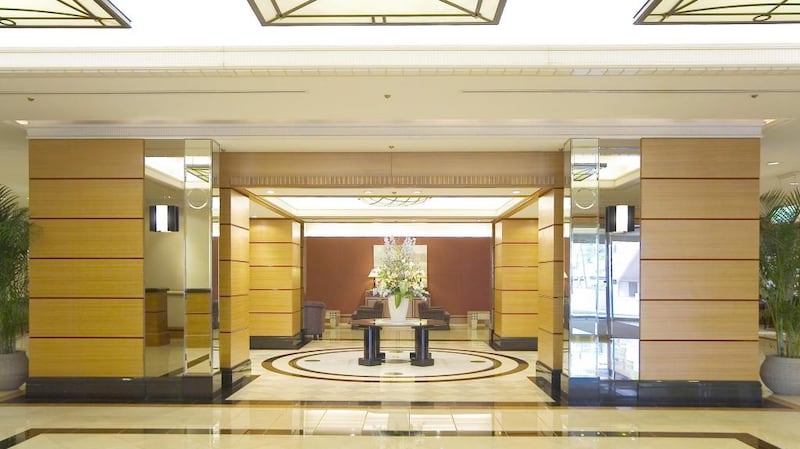
There are two menus. One is about as thick as a phone directory featuring whiskey; if they’ve got a full stock, then the Grand’s whiskey cabinet probably trumps Ireland’s GDP. The other menu is for food and is a quicker read. After a complicated ersatz sign-language, there arrives a bowl of nuts that would leave a squirrel hungry, a club sandwich and an exceedingly small beer. This is served with full silver platter and linen napkins. The place is candlelit, with a jazzy American soundtrack and it has no people.
For a country of 126 million people, Japan can be extraordinarily empty. And strange.
The beloved Christmas classic It's A Wonderful Life was released in 1946. It was directed by Frank Capra, the Italian-American auteur who had fought in the first World War. But a year before, Capra produced and directed Japan: Know Your Enemy, a slanted hour of propaganda made to warn US soldiers before they entered the Pacific theatre. The bomb had been dropped on Hiroshima before the film could serve any material purpose. But it's still available on Netflix here and from a distance of 70 years is monumentally insensitive.
But then so many of western portrayals of Japan, from Richard Chamberlain in Shogun to Bill Murray in Lost In Translation, have been skewed – viewed through the prism of the Japanese and their funny little ways. Part of the fun for rugby fans touring the country for the next month is having preconceptions either confirmed or obliterated.
Kobe may be rugby heartland but on the platform at Misaki-koen subway station, a group of schoolboys are crowding playing virtual baseball on their phones. Because it’s next to the Misaki Stadium, the station is all decked out in World Cup iconography.
Nearby, there's a group of fans in Eagles tops posing in front of a life-size still of Keith Earls. But the Japanese boys are lost in baseball. The game has been an obsession here since Babe Ruth bewitched city after city with an exhibition tour in 1934. Banzai Babe, went the chant at the time. It wasn't a war cry then, it just meant may you live for 10,000 years. They adored the Babe and he loved them back. America's pastime caught fire and that was that.
Wedding venue
It’s one of the impossibilities for World Rugby, trying to get noticed in a vast country happily wedded to its own cultural fascinations. It’s a bit like trying to hold the World Sumo Championships in greater Gloucester, or in the French rugby towns of the Bay of Biscay.
The Shizuoka Stadium, where Japan host Ireland on Saturday morning, is nestled into the hills on the edge of town. At first glance, it seems like a peculiar place to build an arena, as if the Japanese equivalent of a Stroke Fahy or a Pee Flynn had the wherewithal to drive the project into being. But it’s pleasant, a compact track and field arena – where some of the Irish Olympians will base themselves next year – repurposed for rugby.

On Friday afternoon, the pavilion is hot and empty and the staff set up the merchandise stalls. You hope they’re well stocked because there’s a marked absence of bars on the march uphill from the train station. In fact, the most prestigious building in the area is The House Aino, a guest wedding venue that has been operating since 1926.
Worringly, they are turning it into an Irish bar for this day only. Given the beer, the heat and the emotive power of the Ireland backline cutting loose, it could lead to a few disastrously spur of the moment decisions on the way back down again.
Inside the stadium, Peter O'Mahony sits with Garry Ringrose and Greg Feek, the Irish scrum coach, fielding questions in both English and Japanese. They're aware that this game, this day, is a big deal and they say all the right things. It's here that Ireland's disparate band of followers will converge for a few hours, many in on the bullet trains from Tokyo.
For a few hours, Shizuoka will be the centre of the rugby world. It promises to be colourful, boozy and – on the field – high scoring. Maybe it’s an illusion to pretend that all of Japan will be gripped by what happens over those 80 minutes. But as this tournament grows, so too will the local curiosity. One week in and it’s been a triumph. Rugby must be thrilled.
Banzai, Japan!


















